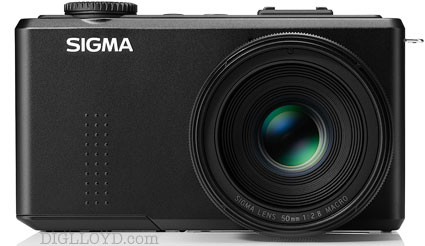Primes are Limiting, Zooms are Compromised, Why not Bi-Focal or Tri-Focal Lenses?
I’ve thought about what I like in a smaller camera over the past year.
I don’t want to eliminate my DSLR, but with the right camera design and just a few high performance lens choices, a small camera can get a lot done.
Which brings me to two designs: the Sony RX100 and the Sigma DP Merrill line. The Sony sensor is sensational (color in particular), producing astonishingly good results when processed well from raw. The Sigma Foveon true-color sensor within its operating range is also sensational (mainly for sharpness).
But what about lenses? The two cameras take very different approach:
- The Sony RX100 uses a 28-100mm f/1.8 - f/4.9 zoom lens. While the results from this Zeiss-designed optic are gorgeous, distortion is severe at the wide end (~10%) and lens sharpness tends to fall apart at the outer zones and longer focal lengths. And electronic zooming has always been a lousy ergonomic design.
- The Sigma DP Merrill design offers three separate lenses, each offering quality matching or exceeding the best DSLR lenses, and each f/2.8. Elegantly simple, but one has to carry three cameras for 28/45/75mm coverage (two is actually quite nice in my experience, three gets to be a handful).
Of the two approaches, I find the simplicity of the single prime lens more attractive: I would rather have a fixed focal length lens approaching perfection than a highly compromised zoom lens with an absurd loss of brightness as it is zoomed (even if its bokeh is gorgeous).
In short, I would also rather carry dual Sony RX100 cameras each with a high performing fixed lens rather than the existing compromised zoom, say a 19mm and a 28mm.
I prefer not to carry and swap/swap/swap among multiple lenses when I can avoid it, but the ergonomics and compromises of a zoom lens are equally unattractive. Hence the Sigma DP Merrill approach is one that I have found eminently practical: carry two cameras and the range is greatly expanded, and with some redundancy of battery, card, camera.
Not a prime and not a zoom
There is an alternative which does not involve interchangeable lenses, a concept which Leica pioneered: the Tri-Elmar idea: three optimized focal lengths in one lens (the Elmar designation refers to a lens speed of f/4). It’s not just the ability to optimize the optics, it is also the ergonomics of choosing a focal length using a silky-smooth 3-way toggle-ring.
This idea can be reduced to dual focal lengths, which would serve to cover a highly useful range of shooting positions. Ideally, a ring on the lens would manually alternate between focal lengths, but it would be OK to have a toggle button too.
Dual focal lengths would presumably allow an f/2.8 lens speed along with optimized performance at both focal lengths. While modern lens design might afford three focal lengths, maintaining peak performance with three positions would be more difficult or expensive; it starts to become more of a zoom.
Consider if either the Sony RX100 or Sigma DP Merrill were offered with models having bi-focal lenses. These would probably have to be f/2.8 (not f/2) in order to maintain high image quality. I’d suggest a line of three cameras with bi-focal lenses as follows:
- 19mm + 24mm.
- 28mm + 56mm.
- 35mm + 75mm.
The 28mm + 56mm choice would cover many shooting situations and after all, “foot zoom” is far better for so many things (choosing perspective properly for one thing). The other two, particularly the 19+24mm one would be loads of fun in some situations.
A tri-focal lens would be fine also, so long as the optical quality could be maintained. A 28/35/56mm comes to mind (limiting the focal range to 2X is probably needed to maintain high quality).

































